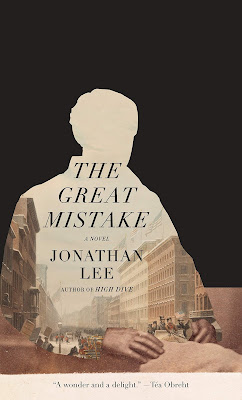 |
| New York : Knopf, 2021 |
Green was instrumental in bringing together the boroughs of New York into what we now know as the modern city, a result dubbed by many as the great mistake. He was also instrumental in making possible such important public works as Central Park, The Metropolitan Museum of Art, The Museum of Natural History, and The New York Public Library.
The Great Mistake opens with Green's murder. There is no question who committed the crime, so the focus becomes why the crime was committed. Told in alternating chapters, the novel follows Inspector McClusky's investigation of the murder while also supplying Green's back-story starting from his youth growing up on a farm in Massachusetts. The chapter titles are taken from the names of the gates for entry into Central Park—Boys' Gate, Children's Gate, Girls' Gate, Women's Gate, Engineers' Gate, Farmers' Gate, Gate of All Saints, Hunters' Gate, Mariners' Gate, Miners' Gate, Merchants' Gate, Naturalists' Gate, Woodman's Gate, Pioneers' Gate, Scholars' Gate, Warriors' Gate, Strangers' Gate, Inventors' Gate, Artisans' Gate, and Artists' Gate. Green insisted the gates be named for all those who came to New York to seek their fortune instead of naming them for the wealthy members of New York society.
While Green was involved in very important work, that isn't the primary focus of the novel. What we learn in this novel is more about the man himself and his relationships. Recognizing his own homosexuality at an early age and then being shipped off to New York as an apprentice when his friend's mother perceives the situation, he learns to hide his desires. He repeatedly gets the message through the years that it's not acceptable—and it's actually quite dangerous—to be who he is. Even when he eventually meets his greatest friend and partner, Samuel J. Tilden, they seem unable to consummate their great love for fear of what it would mean if they were caught. It's the story of channelling the energy that might have gone toward that relationship into public works that were representative of the things they both valued—nature, the arts, and literature. It was important to Green, who grew up poor, to make all of these things available to everyone. These institutions stand as a monument to their great love.
No comments:
Post a Comment